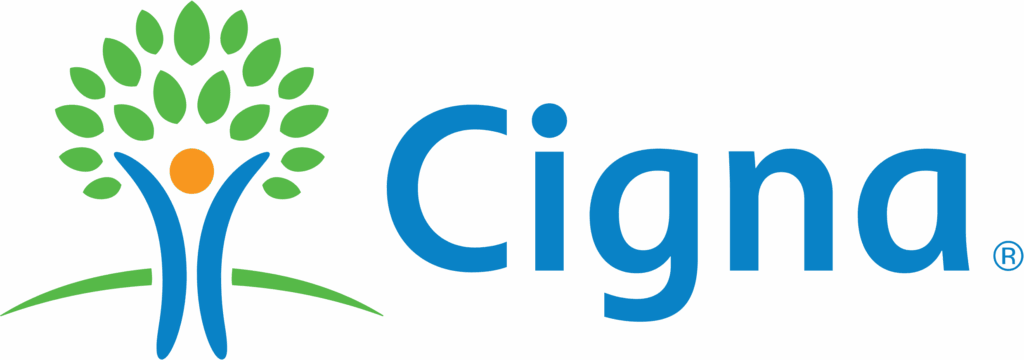Understanding Codependency
To truly grasp the concept of codependency, it’s helpful to move beyond simple definitions and explore its core characteristics and origins. At its heart, codependency is often described as a behavioral or psychological pattern that develops as a result of prolonged exposure to a dysfunctional family system or relationship dynamics, particularly those involving addiction, abuse, or chronic illness. Individuals with codependent traits learn to suppress their own needs and emotions to focus on, and control, the needs and behaviors of others, especially those close to them. This focus on others becomes a primary way of finding identity, security, and validation.
A key element of codependency is emotional reliance. This isn’t just about caring deeply for someone; it’s about feeling responsible for their emotions and well-being, to the point where your own emotional state becomes dictated by theirs. If they are happy, you might feel relief; if they are struggling, you might feel intense anxiety or guilt, as if you have failed them or are somehow to blame. This emotional entanglement makes it difficult to maintain a sense of self distinct from the other person. Your mood, your decisions, and even your sense of self-worth become dependent on the other person’s condition or approval.
Another defining feature is boundary issues. Codependency often manifests as a lack of clear, healthy boundaries – both externally and internally. Externally, this means difficulty saying no, allowing others to violate your personal space or values, or conversely, trying to control or manipulate others’ choices and behaviors under the guise of “helping.” Internally, it means difficulty recognizing your own feelings, needs, and limits, often overriding them to accommodate others. This lack of boundaries leaves individuals vulnerable to burnout, resentment, and exploitation, while simultaneously fostering unhealthy dependence in the other person.
Recognizing the signs and symptoms of codependency in oneself or others can be a crucial first step toward healing. Common signs include:
– Difficulty saying no: A pervasive fear of disappointing others or being seen as selfish leads to agreeing to requests even when it’s inconvenient, uncomfortable, or goes against one’s values.
– People-pleasing: An intense need for external validation and approval, often going to extreme lengths to make others happy, even at personal cost.
– A need to control others: Believing you know what’s best for others and feeling responsible for guiding their decisions or managing their problems. This can manifest as nagging, manipulating, or excessive worrying about their choices.
– Poor self-esteem: A lack of self-worth that is heavily influenced by external factors, particularly the opinions and actions of others. Feeling inadequate unless you are needed or actively helping someone.
– Difficulty identifying and expressing feelings: Having been raised in environments where emotions were suppressed or punished, individuals may struggle to understand their own emotional landscape or express their feelings authentically.
– Caretaking or “rescuing” behavior: Feeling compelled to fix others’ problems, even when it’s not your responsibility or they haven’t asked for help. This can involve enabling unhealthy behaviors.
– Fear of abandonment or rejection: A deep-seated fear that if you don’t meet others’ expectations or constantly prove your worth, they will leave you.
– Loyalty to a fault: Staying in unhealthy or abusive relationships far longer than is healthy, often out of a misguided sense of loyalty or obligation.
– Hypervigilance: Constantly scanning the environment and others’ moods to anticipate their needs or potential problems.
– Focusing on others’ problems: Becoming so preoccupied with someone else’s issues that you neglect your own life, responsibilities, or well-being.
Understanding the root causes of codependency is essential for addressing it effectively. While not everyone who exhibits codependent traits experienced severe trauma, these patterns often originate in childhood within families characterized by:
– Addiction: Growing up with a parent or caregiver struggling with
alcohol addiction or
drug addiction often forces children to take on adult responsibilities, suppress their feelings, and focus on managing the unpredictable behavior of the addicted person. They learn to become hyper-aware of the mood and needs of the addicted individual, feeling responsible for their sobriety or happiness. This environment teaches them to equate love with caretaking and control.
– Neglect or Abuse: Emotional, physical, or sexual abuse, or chronic neglect, can lead a child to believe their own needs and feelings are unimportant or dangerous. They may learn to seek safety by focusing solely on the needs of the abuser or other family members, attempting to control chaotic situations or earn love by being “good” or indispensable. This can lead to deep-seated feelings of worthlessness and a desperate need for external validation.
– Chronic Illness or Disability: Growing up with a family member who has a chronic illness or disability, where the child took on significant caregiving roles, can also foster codependent patterns. While caregiving can be born out of genuine love, if it comes at the expense of the child’s own development, emotional needs, and boundaries, it can lead to a lifelong pattern of prioritizing others’ health and needs above their own.
– Emotionally Immature or Unavailable Parents: Parents who are unable to meet a child’s emotional needs, are inconsistent in their affection, or who rely on the child for emotional support can inadvertently train the child to seek validation by pleasing the parent or taking care of the parent’s feelings.
These early experiences shape a person’s core beliefs about themselves, others, and relationships. They learn that their value comes from what they do for others, rather than who they are. They may struggle with intimacy, trust, and healthy communication because they never learned to navigate these dynamics in a balanced way. Recognizing these origins isn’t about blame, but about understanding the deep roots of the patterns and the protective mechanisms that codependency often initially served, even as it became harmful over time. Seeking help to explore these roots is a vital part of
drug rehab programs or
alcohol rehab programs, especially when substance use has developed as a coping mechanism for the underlying issues often tied to codependency. Compassion Recovery Center understands this connection deeply and offers integrated approaches, including
dual diagnosis treatment, to address both the addiction and the underlying emotional or relational patterns.
The Impact of Codependency
The effects of codependency ripple outwards, significantly impacting not only the individual experiencing these patterns but also everyone in their orbit. Living with codependency is often an exhausting and emotionally draining experience. Internally, it can lead to a host of personal well-being and mental health challenges. The constant need for external validation means that self-esteem is fragile and easily shattered by criticism or perceived rejection. Because self-worth is tied to what one does for others, there’s a perpetual feeling of not being “enough.” This can manifest as chronic anxiety, as the individual constantly worries about others’ opinions or potential problems. Depression is also common, stemming from suppressed emotions, unmet needs, and the sheer weight of feeling responsible for others’ happiness.
The inability to set boundaries and the tendency towards people-pleasing can lead to significant stress and burnout. Individuals may overcommit, neglect their own physical health, and engage in self-sacrificing behaviors that leave them feeling depleted and resentful. This can contribute to physical ailments, chronic fatigue, and a general feeling of being overwhelmed by life. Moreover, the struggle to identify and express one’s own feelings can lead to emotional numbness or volatile emotional swings, as suppressed feelings eventually erupt. Codependency can also be closely linked to other mental health conditions, such as anxiety disorders, depressive disorders, and even
mental health issues stemming from trauma, especially for those whose codependency originated in abusive or chaotic environments.
Dual diagnosis treatment is crucial in these cases, addressing both the codependency-related issues and any co-occurring mental health conditions.
The impact on relationships is perhaps where codependency is most visible and most destructive. In family relationships, a codependent dynamic can create unhealthy enmeshment, where individual identities are blurred. Parents might be overly involved in their adult children’s lives, or children might feel responsible for their parents’ emotional states. This prevents healthy individuation and autonomy. Sibling relationships can be strained by caretaking patterns or competition for parental approval. In friendships, codependency can lead to one-sided relationships where one person is constantly giving and the other is constantly taking, or it can create intense drama and instability due to boundary violations and emotional manipulation.
In romantic partnerships, codependency can be particularly challenging. It often manifests as a relationship based on need rather than healthy mutual support and love. One partner might rely excessively on the other for emotional stability, financial support, or decision-making, while the codependent partner finds purpose in being needed, often adopting a “rescuer” role. Communication is often indirect or passive-aggressive, as the codependent person fears expressing their true needs or feelings directly. Intimacy can be difficult, as genuine emotional connection requires vulnerability and clear boundaries, which are often lacking. Relationships can become cyclical, marked by conflict, enabling, and eventual resentment, but held together by a fear of being alone or a misguided sense of obligation.
Codependency in the context of addiction and recovery is a deeply interwoven and complex issue. Addiction thrives in environments where codependent patterns are present. The codependent partner, parent, or friend of someone with addiction often becomes the “caretaker,” trying to control the addicted person’s substance use, covering up their mistakes, making excuses for their behavior, or even providing financial support that enables the addiction. This is often done out of love, fear, or a desperate hope that their actions will “fix” the addiction. However, these actions inadvertently shield the person with addiction from the natural consequences of their behavior, removing incentives for them to seek help and enabling the addiction to continue.
Simultaneously, the person struggling with addiction may become dependent on the codependent’s caretaking, further solidifying the unhealthy dynamic. The addicted person might rely on the codependent to manage their life, bail them out of trouble, or provide emotional support while they continue using. This creates a harmful cycle where the codependent person feels increasingly responsible and burned out, and the person with addiction feels less and less capable of managing their own life or recovery.
Even when the person with addiction enters recovery, codependent patterns can pose significant challenges. The codependent individual may struggle to let go of the caretaker role, feeling lost without the constant focus on the other person’s problems. They may unknowingly sabotage recovery efforts by continuing to hover, control, or fail to establish healthy boundaries. Conversely, the person in recovery might have become so accustomed to being taken care of that they struggle with independent living or taking full responsibility for their sobriety. Addressing codependency is therefore not just beneficial, but often essential for the long-term recovery of both the individual who struggled with addiction and their loved ones.
Virtual rehab in California and
intensive outpatient programs that include family therapy or support groups can be invaluable resources for addressing these interconnected issues, offering support for the entire family system involved in addiction and recovery. Compassion Recovery Center offers
remote IOP and
dual diagnosis treatment designed to help individuals and families navigate these complex dynamics alongside addiction recovery.
Helping vs. Harming
One of the most challenging aspects of codependency is differentiating between genuine support and harmful, enabling behaviors. On the surface, many codependent actions appear helpful or even heroic. They often stem from a place of love, concern, or a deep-seated desire to alleviate suffering. However, the impact of these actions is often the opposite of true help. True help empowers the other person to develop their own strengths, take responsibility for their life, and learn from their experiences. Harming, in the context of codependency, involves actions that prevent the other person from facing consequences, hinder their growth, or keep them dependent, while simultaneously eroding the “helper’s” well-being.
Let’s look at examples of helping behaviors that truly empower others:
– Offering emotional support without trying to fix: Listening actively and empathetically when someone is struggling, validating their feelings, and offering encouragement without jumping in to solve their problems for them.
– Setting clear and respectful boundaries: Communicating your own needs and limits clearly and kindly, and upholding them. This teaches others how to treat you and models healthy relationship behavior. For instance, saying, “I love you, and I’m here to listen, but I cannot lend you money right now,” or “I can’t engage in this conversation when you are under the influence.”
– Encouraging self-reliance: Supporting the other person in finding their own solutions, connecting with appropriate resources (like therapy or recovery programs), and celebrating their independent efforts, even small ones.
– Allowing natural consequences: Permitting the person to experience the outcomes of their choices, both positive and negative. This is often the most difficult but most crucial form of help, as consequences are powerful teachers. If someone is struggling financially due to addiction, allowing them to face utility shutoffs (while ensuring basic safety) can be a catalyst for seeking help, whereas constantly bailing them out removes that motivation.
– Prioritizing your own well-being: Modeling self-care and demonstrating that it’s healthy and necessary to attend to your own needs. Taking time for yourself, pursuing your own interests, and maintaining your own mental and physical health sends a powerful message that individual well-being matters.
– Communicating honestly and directly: Expressing your thoughts, feelings, and needs openly and respectfully, without manipulation, passive-aggression, or expectation that the other person should read your mind.
– Trusting others’ capacity: Believing in the other person’s ability to handle challenges, make decisions, and eventually overcome difficulties, even when they are currently struggling. This communicates respect and confidence in them.
Now, let’s examine examples of harmful behaviors that are rooted in codependency and enable or perpetuate dependency:
– Rescuing from consequences: Bailing someone out of legal trouble, paying their debts incurred due to substance use, or constantly cleaning up their messes (literal or metaphorical). While it feels like protecting them, it prevents them from learning from mistakes.
– Making excuses or covering up: Lying for someone to their employer, family, or friends to hide the extent of their problems or addiction. This enables denial and prevents them from taking responsibility.
– Controlling or monitoring their behavior: Constantly checking up on someone, trying to dictate where they go or who they see, searching their belongings, or trying to force them into treatment against their will. This stems from a need for control and lack of trust, which is disempowering for the other person.
– Sacrificing your own needs and boundaries: Consistently putting the other person’s needs ahead of your own, canceling your plans to cater to their whims, or allowing them to violate your personal boundaries without consequence. This teaches them that your needs are secondary and that boundary violations are acceptable.
– Enabling substance use: Providing money that is likely to be spent on drugs or alcohol, buying substances for them, or using substances with them to keep them close or avoid conflict.
– Taking on their responsibilities: Doing their chores, managing their finances, or handling their legal issues when they are capable of doing so themselves. This prevents them from developing necessary life skills and self-efficacy.
– Walking on eggshells: Constantly trying to manage the other person’s mood or prevent conflict by carefully censoring your own behavior, thoughts, and feelings. This creates an environment of inauthenticity and tension.
– Feeling responsible for their emotions: Believing it’s your job to make them happy, calm them down, or fix their sadness, leading to excessive anxiety and efforts to manipulate their mood.
– Threatening ultimatums without following through: Making statements about leaving or setting firm boundaries that you do not enforce, which erodes trust and teaches the other person your limits are not serious.
Understanding this distinction is pivotal. Actions driven by codependency are often rooted in fear (of abandonment, of not being needed, of conflict) and a misguided sense of responsibility. They seek to control external circumstances or other people to alleviate internal anxiety. Truly helpful actions, on the other hand, are rooted in respect for the other person’s autonomy and belief in their capacity for growth, even if it means allowing them to struggle or fail. They prioritize the long-term well-being and independence of both individuals over short-term comfort or control. Recognizing which category your actions fall into is a critical step in addressing codependency and fostering healthier relationships. If you find yourself frequently engaging in the “harming” behaviors, it might be a sign that you are struggling with codependency and could benefit from support. Compassion Recovery Center offers resources and therapeutic approaches that can help individuals and families learn the difference between helping and harming and build healthier interaction patterns, including through
virtual IOP and counseling services accessible from anywhere in California. If you’re wondering if your actions are truly helping, perhaps it’s time to explore your own patterns;
reach out today to learn how therapy can help.
Overcoming Codependency
Breaking the cycle of codependency is a journey that requires self-awareness, courage, and dedicated effort. It’s not simply about stopping “helping” behaviors; it’s about fundamentally changing your relationship with yourself and learning new ways of relating to others. The first crucial step is acknowledging and accepting that you exhibit codependent traits and that these patterns are causing harm to you and your relationships. This is often difficult, as these behaviors may feel deeply ingrained and like a core part of your identity.
Steps to begin breaking the cycle of codependency often include:
1. Increasing Self-Awareness: Start paying attention to your thoughts, feelings, and behaviors in relationships. When do you feel compelled to “fix” things? When do you struggle to say no? What are your motivations for doing things for others? Journaling, mindfulness exercises, and honest conversations with a trusted friend or therapist can help you identify specific codependent patterns.
2. Identifying Your Needs and Feelings: Because codependency often involves suppressing your own emotional landscape, a vital step is reconnecting with yourself. Practice identifying what you are feeling in the moment. What do you need? What do you want? This takes practice, as you may be more attuned to others’ needs than your own.
3. Setting Boundaries: This is perhaps the most challenging but essential step. Boundaries are not about controlling others; they are about defining what is acceptable and unacceptable behavior towards you. Start small. Practice saying no to things you genuinely don’t want to do. Define your limits regarding time, energy, finances, and emotional availability. Communicate these boundaries clearly and assertively, and be prepared to enforce them, even if it causes discomfort or pushback from others who are used to the old dynamic.
4. Practicing Self-Care: Codependency often involves neglecting personal needs. Self-care is not selfish; it’s necessary for well-being. This involves prioritizing your physical health (sleep, nutrition, exercise), emotional health (processing feelings, seeking support), mental health (engaging in hobbies, learning), and spiritual health (connecting with your values or a higher power). Making time for activities that nourish you reinforces your worthiness and independence.
5. Detaching with Love: This concept is particularly relevant in relationships involving addiction. It means emotionally disengaging from the other person’s destructive choices while still maintaining care and concern for their well-being. It involves letting go of the illusion that you can control their behavior and allowing them the dignity of their own choices and consequences. This is not abandonment; it is releasing yourself from the burden of responsibility for their actions and focusing on your own health.
6. Learning to Tolerate Discomfort: Breaking codependent patterns often means facing discomfort – the other person’s anger or disappointment when you set boundaries, the fear of being alone, the guilt you might feel when you don’t “rescue” someone. Learning that you can tolerate these uncomfortable emotions without reverting to old patterns is key to building resilience.
The role of therapy is often indispensable in overcoming codependency. These patterns are deeply ingrained and often linked to past experiences and trauma. A therapist can provide a safe and supportive space to explore the origins of your codependency, identify specific patterns, and develop healthier coping mechanisms and relationship skills.
Online therapy, such as
online CBT therapy (Cognitive Behavioral Therapy), is particularly effective. CBT helps individuals identify and challenge the distorted thought patterns that underpin codependency (e.g., “If I don’t help them, they won’t love me,” or “I am responsible for their happiness”). It teaches skills for managing anxiety, setting boundaries, and building self-esteem. Because codependency often impacts relationships,
virtual couples counseling or family therapy can also be incredibly beneficial. These modalities allow individuals and their loved ones to work together, improve communication, set healthy boundaries as a unit, and establish new, healthier ways of interacting. For those whose codependency is intertwined with a loved one’s addiction, therapy can help navigate the complexities of recovery and establish roles that support sobriety without enabling.
Compassion Recovery Center understands that codependency is often a significant factor for individuals struggling with addiction and their families. Their approach often includes addressing these relational dynamics as part of the overall treatment plan, recognizing that healing requires addressing both the substance use and the underlying emotional and behavioral patterns. Whether through individual therapy, group therapy focused on relationships and boundaries, or family sessions, therapy provides the tools and support needed to understand and overcome codependency. Taking the step to seek professional help is a powerful act of self-care and a commitment to building a life based on genuine connection and self-respect, rather than obligation and control. If you’re ready to explore how therapy can help you address codependency, consider a
Free Assessment to discuss your needs.
Treatment Options
For individuals recognizing codependent patterns in their lives, especially when intertwined with substance use disorders or mental health challenges, seeking professional help is a vital step toward healing and reclaiming your life. Compassion Recovery Center specializes in providing accessible, effective remote treatment for drug and alcohol addiction, primarily serving the Orange County, California area through telehealth. While their core focus is addiction recovery, they understand that underlying issues like codependency are often significant factors that need to be addressed concurrently for lasting sobriety and well-being.
Compassion Recovery Center offers a range of services designed to meet individuals where they are, providing flexibility and comprehensive care. One of their primary offerings is the
Virtual IOP Program (Intensive Outpatient Program). A traditional
Intensive Outpatient Program (IOP) provides structured therapy and support several days a week for a few hours each day, offering more intensity than standard outpatient care but allowing clients to live at home. The
remote IOP offered by Compassion Recovery Center takes this model online, providing the same level of clinical intensity and therapeutic support through secure video conferencing. This means individuals can access high-quality addiction and mental health treatment, including therapy addressing codependency, without the need to commute to a physical location.
This
telehealth addiction treatment model offers significant benefits, particularly for residents of
Orange County, CA, and throughout California.
– Accessibility:
Virtual rehab in California removes geographical barriers. Whether you’re in a rural area or simply face challenges with transportation, you can connect with experienced clinicians from the comfort and safety of your home.
– Flexibility: Remote treatment allows individuals to maintain their daily responsibilities, such as work, school, or childcare, while receiving intensive care. This is crucial for many people, especially those who cannot take extended time away for residential treatment.
– Comfort and Privacy: Participating in therapy and groups from a familiar environment can reduce anxiety and increase comfort levels for some individuals. It also offers a higher degree of privacy.
– Integration into Daily Life: Learning coping skills and practicing new behaviors within your actual home environment, where triggers and relationship dynamics occur, can make the transition to long-term recovery smoother.
– Family Involvement: Telehealth makes it easier for family members, who may live in different locations or have busy schedules, to participate in family therapy sessions, which is particularly helpful for addressing codependency within the family system.
Compassion Recovery Center’s
remote IOP incorporates various therapeutic modalities beneficial for both addiction recovery and addressing codependency. This includes individual therapy sessions where you can explore the roots of your codependent patterns with a licensed therapist, learn boundary-setting skills, and work on building self-esteem. Group therapy provides a supportive environment to connect with others facing similar challenges, practice new communication styles, and receive feedback. Many programs also integrate therapies like
online CBT therapy, which is highly effective for challenging codependent thought patterns, and potentially components of Dialectical Behavior Therapy (DBT) which can help with emotional regulation and interpersonal effectiveness – crucial skills for overcoming codependency.
For those with co-occurring mental health conditions alongside addiction and codependency, Compassion Recovery Center offers
dual diagnosis treatment. This integrated approach ensures that both the addiction and the underlying mental health issues (which can be intertwined with codependent behaviors, such as anxiety or depression) are treated simultaneously by the same clinical team.
Additionally, for individuals whose codependency is linked to opioid addiction, the center may offer
MAT treatment online (Medication-Assisted Treatment), which combines FDA-approved medications with counseling and behavioral therapies. While MAT primarily addresses the physical dependence on opioids, the accompanying therapy components are essential for addressing the behavioral and relational patterns like codependency that may contribute to or be affected by addiction.
For families navigating the impact of addiction and codependency,
virtual couples counseling rehab or family therapy can be incredibly helpful. These sessions, conducted remotely, provide a platform for open communication, education about addiction and codependency, and the opportunity to establish healthier family dynamics and boundaries that support everyone’s recovery.
Whether you are struggling with addiction and recognize codependent traits in yourself, or you are a family member whose life is being impacted by a loved one’s addiction and your own codependent patterns,
telehealth addiction treatment provides a viable and effective path forward. An
Intensive Outpatient Program (IOP) or
Partial Hospitalization Program (PHP) delivered virtually can provide the structure, support, and therapeutic interventions needed to address both addiction and codependency, leading to sustainable recovery and healthier relationships. Compassion Recovery Center is dedicated to providing compassionate, accessible care. To learn more about their programs and how they can help you address codependency and addiction, you can
contact us for a confidential assessment or
verify your insurance online to see how remote treatment is covered. Starting your recovery journey, including healing from codependency, is possible with the right support.
Conclusion
Understanding codependency is a powerful first step toward reclaiming your life and building healthier, more fulfilling relationships. We’ve explored what codependency is – a pattern of emotional reliance and boundary issues often rooted in childhood experiences like family addiction, neglect, or trauma. We’ve seen how it impacts personal well-being, contributing to anxiety, depression, and low self-esteem, and how it strains relationships by fostering unhealthy dependence and control rather than genuine connection. Crucially, we’ve differentiated between truly helping behaviors that empower others and harmful, codependent actions that enable unhealthy patterns and perpetuate dependency, particularly within the challenging context of addiction.
The journey of overcoming codependency involves courageous steps: increasing self-awareness, reconnecting with your own needs and feelings, setting and maintaining healthy boundaries, and prioritizing self-care. This path is rarely easy, often bringing up fear, guilt, and resistance from others. This is precisely why seeking professional help is so valuable. Therapy, particularly modalities like CBT and couples/family counseling, whether delivered in-person or through flexible
telehealth services, provides the essential tools, guidance, and support needed to navigate these complex emotional landscapes, challenge ingrained patterns, and build a stronger sense of self.
For individuals struggling with addiction, or for their loved ones impacted by addiction and codependency, addressing these patterns concurrently is vital for lasting recovery. Compassion Recovery Center specializes in providing comprehensive remote addiction treatment, offering programs like
virtual IOP that make high-quality care accessible, especially for those in the
Orange County, CA area and throughout California. These programs integrate therapy that can effectively address codependency alongside substance use, mental health issues (
dual diagnosis treatment), and even provide support like
MAT treatment online when needed.
Choosing to heal from codependency is an act of profound self-compassion. It’s about moving away from a life dictated by fear and external validation towards one grounded in self-respect, authenticity, and genuine connection. It’s about learning to help others not by fixing or controlling them, but by standing in your own strength, setting healthy examples, and offering support that truly empowers.
If you recognize yourself in the patterns of codependency discussed here, particularly if they are intertwined with substance use or affecting your relationships, please know that you are not alone and help is available. Exploring treatment options, whether it’s a
virtual IOP program, individual therapy, or family support, can provide the foundation you need to build a healthier future. Compassion Recovery Center is here to offer confidential support and guide you toward recovery. You can
contact us to learn more about our remote treatment services and how they can support your journey. Taking the step to
start your free assessment or
check insurance coverage is a powerful declaration that you are ready to move from harming to truly helping – both yourself and those you care about. Recovery is possible, and a life free from the constraints of codependency awaits.
Get help for substance abuse and underlying issues like codependency today.
How do you understand codependency?
Codependency is understood as a behavioral pattern where an individual’s self-worth and identity are overly connected to the needs and behaviors of others. It involves an excessive emotional reliance on others, a strong need for approval, and difficulty setting healthy personal boundaries. People with codependent traits often feel responsible for solving others’ problems, controlling their choices, or sacrificing their own needs to please others, often stemming from difficult childhood experiences.
Are you codependent or just caring?
The key difference lies in motivation and impact. Caring involves healthy support, respect for autonomy, and maintaining your own well-being and boundaries. Codependency, while appearing caring, is driven by a need for validation, fear of rejection, or a need to control. Codependent actions often enable unhealthy behaviors in others, prevent them from facing consequences, and lead to the “helper’s” own burnout and resentment. Truly caring empowers; codependency enables and exhausts.
Why do people think codependency is bad?
Codependency is considered harmful because it leads to unhealthy relationship dynamics, preventing genuine connection and growth. It erodes the codependent person’s self-esteem, causes significant stress and anxiety, and often results in neglect of their own needs. For the person being “helped,” codependent behavior can enable destructive patterns, prevent them from taking responsibility, and hinder their ability to develop independence. It creates relationships based on unhealthy dependence rather than mutual respect.
What are the dark sides of codependency?
The “dark sides” include enabling addiction or harmful behaviors, fostering resentment and burnout in the codependent person, preventing healthy emotional expression and autonomy in both individuals, and creating relationships based on control and manipulation rather than trust and genuine care. It can lead to the neglect of personal needs, vulnerability to abuse, and a life lived primarily in reaction to others rather than from a place of inner direction.
How does codependency hurt others?
Codependency hurts others by enabling their destructive behaviors (like addiction), shielding them from necessary consequences that could motivate change, hindering their personal growth and independence, fostering a sense of helplessness or entitlement, and creating a dynamic where honest communication and healthy boundaries are impossible. While the intent might be to help, the actions often keep others stuck in unhealthy patterns.
How do you help someone who is codependent?
You cannot “fix” someone else’s codependency, but you can support their healing journey. This involves setting and maintaining your own healthy boundaries, refusing to participate in or enable their codependent behaviors, communicating honestly and assertively about the dynamic, and encouraging them to seek professional help, such as therapy or support groups like Co-Dependent’s Anonymous (CoDA). Modeling healthy behavior is key.
What is the root cause of codependency?
While there can be multiple contributing factors, codependency often originates in childhood within dysfunctional family systems. This can include families impacted by addiction, chronic illness, neglect, abuse, or emotional unavailability. In these environments, children may learn to suppress their own needs and feelings, focus on controlling external circumstances or others’ behaviors, and seek validation by caretaking or people-pleasing as a survival mechanism.








